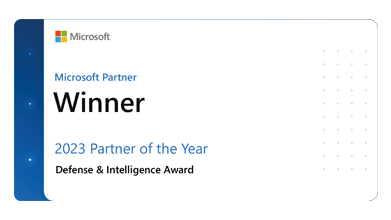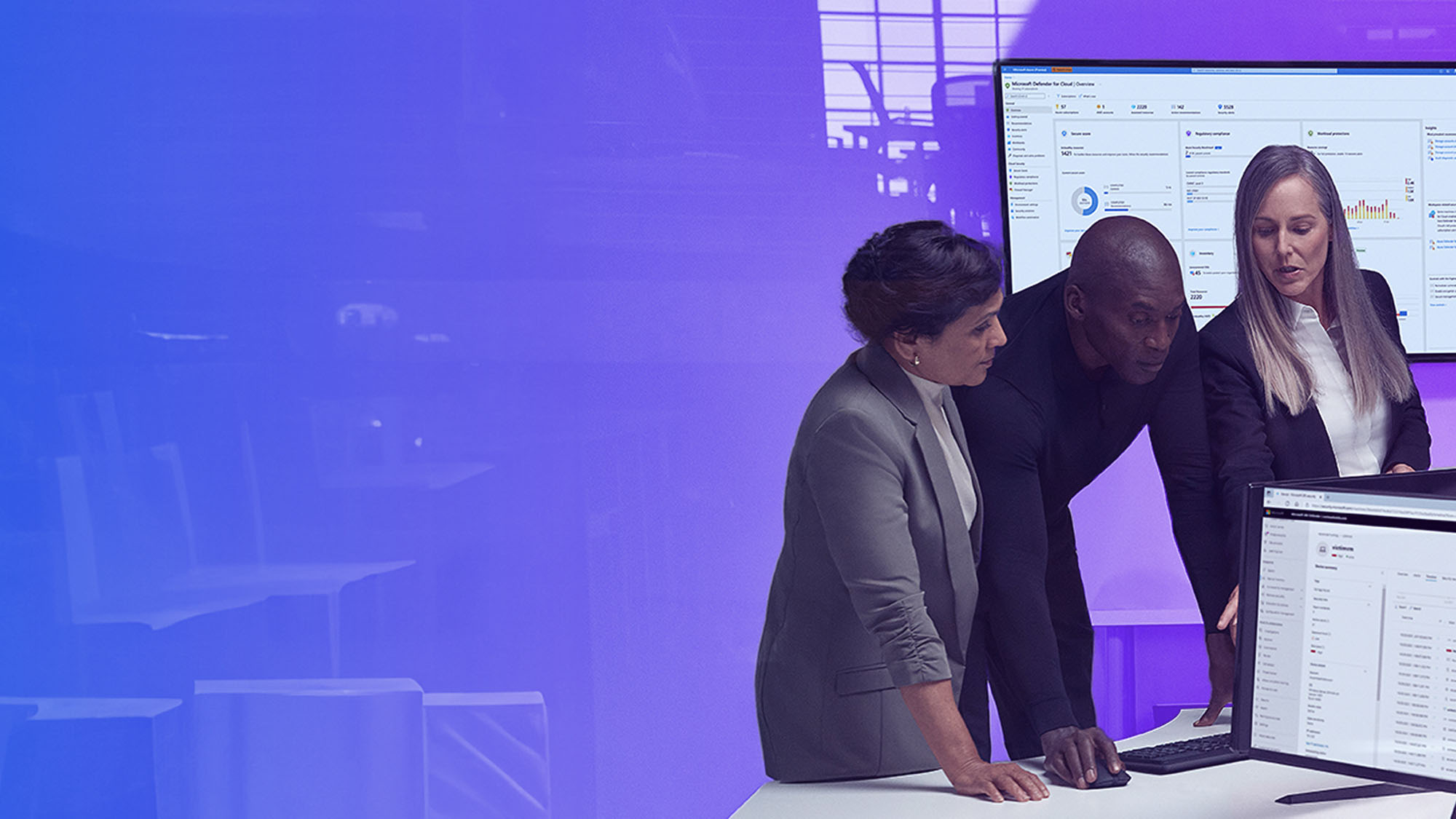Video Transcript
Wyatt Kash
5G technology and its application to supply chain and warehouse logistics are on the verge of unleashing game-changing outcomes for federal agencies and in particular, the U.S. Department of Defense.
One example is the ongoing modernization of the U.S. Marine Corps’ inventory management system. Utilizing features from Microsoft Dynamics 365 Finance-based ERP solution — and assistance from KPMG — the United States Marine Corps, for instance, is transforming operations and supply chain management. This is leading to improvements in project accounting, procurement, data management, security and deployment planning.
Here to discuss that today are Manny Casas R&D Program Manager for the Defense Logistics Agency and Chad Jones, global government lead at KPMG. Gentlemen, thank you so much for joining us. Manny, I'd like to start with you. First of all, would you just briefly describe the scope of DLA Distribution systems globally? And what challenges that you envision 5G helping to address?
Manny Casas
Thank you. Yes, Wyatt. So as you may know, I'm the R&D Program Manager for DLA which my primary role is to infuse innovation in technology into DLA distribution network. DLA manages about 24 distribution centers around the world in order to sustain military operations, sustain warfighter readiness. With that said, there are three primary challenges that we face in DLA distributions. And this is in regards to the business process that entails with inventory management, material distribution, and asset visibility. These three business activities are really labor intensive, and drive a lot of resources, operational costs, labor costs, and impacts the ability to respond to the warfighter from the logistics perspective.
Wyatt Kash
And then Manny how and where do you envision 5G helping to make gains in those three areas?
Manny Casas
That's a good question Wyatt so as I said, these three challenges need to be solved by we have established this 5G Smart warehouse program for the delay, in which many other DLA Distribution Centers are the high volume distribution centers that will require high level automation. And with that, said, you’re looking at a system or system approach, with regards to robotics, artificial intelligence, augmented reality, cybersecurity controls, automate inventory, you name it, industry 4.0 technology. So with that said, the amount of data in data communication and tells between this system is going to be robots supply chain data, we're talking more in particular, so 5G will be an enabler for these systems to communicate and operate, and communicate and transmit that data more efficient and more effectively, to the end user.
Wyatt Kash
And Chad, you have a fairly wide view of 5G's deployment across government. What do you see in DLA's efforts initially that 5G illustrates for longer term potential, you know, not only at DOD, but at federal agencies more widely?
Chad Jones
Yeah, thank you, Wyatt, I think there's a couple of key parameters that we should focus on. One is the connectivity of 5G and what it allows us to do from a machine to machine and human to machine interaction. In the current 4G environment we have now we can absolutely operate robots and conveyors in like equipment. But in the future case of 5G, it allows us to connect humans into machines to machine to machine interaction. And what this allows us to do is to engineer and optimize the equipment and the way it flows. For example, as we move robots and gear around the warehouse itself, or DLA, we can optimize how that process takes place, we can send commands to the robots to be able to be more efficient in the way that they move gear from location to location, we start thinking about the KPIs that Manny spoke of a few minutes ago. This allows us to really increase velocity and movement of gear throughout the warehouse. And if we extrapolate that into the 24 warehouses that represented DLA footprint, it really creates a force multiplier in this process. And secondly, why I think a key part of this is the human interaction in this process, we're going to be now asking the material handlers and supply techs in this process to do a couple of things to interface not only with the warehouse management system, but the equipment in processing, we want to be able to create the information exchange across any element of this process so that at any point in time, we know real time what processing takes place and be able respond more quickly to customer demand. In this case, it allows us to be more reactive to the planning in need of their customers downstream, especially start thinking of depo operations and deployed Marines or servicemen and women downrange, so definitely that is a key attribute of this process.
Wyatt Kash
Well moving from the theoretical to the practical and what we're actually seeing now. Love to hear from both of you about what kind of outcomes or enhanced capabilities are you starting to actually see through the initial deployments of 5G. Manny, let's hear from you first on that.
Manny Casas
So currently, Wyatt we are deploying or 5G prototype? Okay, one of the earlier distribution centers in Albany, Georgia, in which we're establishing a 5G infrastructure in the fiscal year 22. And we're going to continue doing that in FY 23. So we expect, once we have this 5G testbed is going to give the ability to start prototyping this IP IoT solutions to target those three challenges I mentioned early. With that said, we expect to see improvements in reducing labor costs, improve efficiency and effectiveness and sustain the mission of DLA Distribution Center. Reduce lead time when you when the end user process inventory. And at the same time, the accuracy of data is very important, the DoD supply chain. So those three, actually four items that we see benefits from the 5G smart warehouse program.
Wyatt Kash
And, Chad, can you point to any other kinds of outcomes or early enhanced capabilities that you're starting to see across the federal government?
Chad Jones
Yeah, thanks, Wyatt. I think there's a couple of key components here that we want to talk through. One is the actual KPIs that the that the customer in this case, DLA is, is looking for, when we start thinking about accuracy and accountability of gear in stores, and being able to assess that 98%, or greater accountability of gear allows us to be able to create more precisely how that process works. And not by doing more of a manual effort of a wall to wall inventory every year, but allows us to get more efficient and use of the data to where we can do sampling of gear and stores because of the either the RFID or robotic input into this process. Secondly, we think about the reduced manpower that Manny spoke of a few minutes ago that allows us to create greater capacity across these 24 warehouses, we start thinking about the need and demand of any of these warehouses, and especially in an area of high demand, such as in a conflict or high intense process. It allows them to respond more quickly to this to this effort. I think, thirdly, the bigger thing of this is a bigger part of this, excuse me is the readiness or mission readiness in this process. A key attribute here of their customers, mainly the servicemen and women in this process is readiness in this process. We always know that they asked three things, where's my gear, what condition it's in? And how quick can I get it? I think by installing 5G capability and the application support around it, if able to answer all three of those questions and support that mission readiness equation.
Wyatt Kash
Well, I'm curious, these are monumental efforts integrating 5G into existing networks. I'm interested to hear both of you talk about the managing risks when it comes to integrating and beginning to test the capabilities of 5G. Manny, can you talk about, or Chad, maybe if you would go first on this? What do you see are the ways to reduce the risks and get to the benefits faster?
Chad Jones
Yeah, thanks, Wyatt. Great question. First of all, I think it's a technology readiness level or TRL level of the solution that's being implemented, we want to make sure that we have an industry proven process and set of capabilities that's being able to be installed in the DLA process. And we're achieving results immediately. What we've done with the smart warehouse, in the current operation is be able to create this TRL level that's seven or better at this point in time. And once complete, it's going to be well above eight, almost at a nine level. This allows DLA to take advantage of the engineering and incomponentry, or integration of that componentry to move forward in that process. So, this greatly reduces the risk of incorporation into this effort. I think secondly is the holistic view of this solution. We start thinking about the applications himself, the business of DLA, and especially the resources within his process to material handlers and supply tax is considering that human in the loop process is critical to this aspect, making sure they're engaged and tied into this process. And we understand the needs that are required by that personnel. I think thirdly is recognizing the customer itself in this process and what is needed out of that requirement. By using the data and analytics associated with this, we move from the point of view of looking in the rearview mirror and understand historically how things have taken place to be able to try to predict what is needed, when it's needed, and the requirements associated with this. So we're moving along at the pace of the actual customer themselves and delivering product when required.
Wyatt Kash
And Manny, I'm interested, what would you advise the individuals in your position elsewhere about how you're trying to reduce or manage the risks?
Manny Casas
Yes, Wyatt. So we have three primary risks that we are I'm going to mention one of them being the integration that Chad mentioned, in which we're talking about intelligent system or systems that compose the 5G smart warehouse with us. With that said, there could be challenges with comparability. In particular, when we tried to integrate different robotics solutions, IT solution with a warehouse management system where it has execution system. So we plan to actually, in FY 24, you know, partner with industry with an integrator that can help DLA to do this integration of system or systems approach. The other one is cybersecurity that Chad mentioned as well, we want to make sure that that data that supply chain data is not compromised with regards to the integrity, availability and confidentiality. So, we had to take an industry partner industry to go through the risk management framework or my manager to ensure that security controls are there, and we protect the data. And the third one is costs. You know, budget constraints are the cycle comes. So we're actually partnering with government agencies, such as the Marine Corps naps up or you as the R&D that DOD, in order to create economies of scale and leverage resources. So that's another way we mitigate with our government partners as well for cost perspective.
Wyatt Kash
Yes, absolutely. And then many last question for you is, can you talk a little about your next steps and DLA is longer term rollout plans for 5G particularly to get to scale?
Manny Casas
Yes, Wyatt. So we have a five year 5G Smart warehouse roadmap in which it will tell focusing first on the 5G infrastructure. FY 22 fiscal year 22 fiscal year 23. And then moving to target in the first challenge that I mentioned early inventory management solutions. And then FY 25, targeting material distribution, how material moves in the warehouse and at the same time, the next year. Asset visibility, make sure that we have transparency across the DoD supply chains with regards to supply chain that.
Wyatt Kash
Well, it certainly sounds like a lot of exciting opportunities in the very near and not so distant future for DLA. Manny Casas and Chad Jones, thank you very much for taking a few minutes to share your experiences and insights around deploying 5G to better support the Department of Defense and the federal government. We really appreciate your time today.





